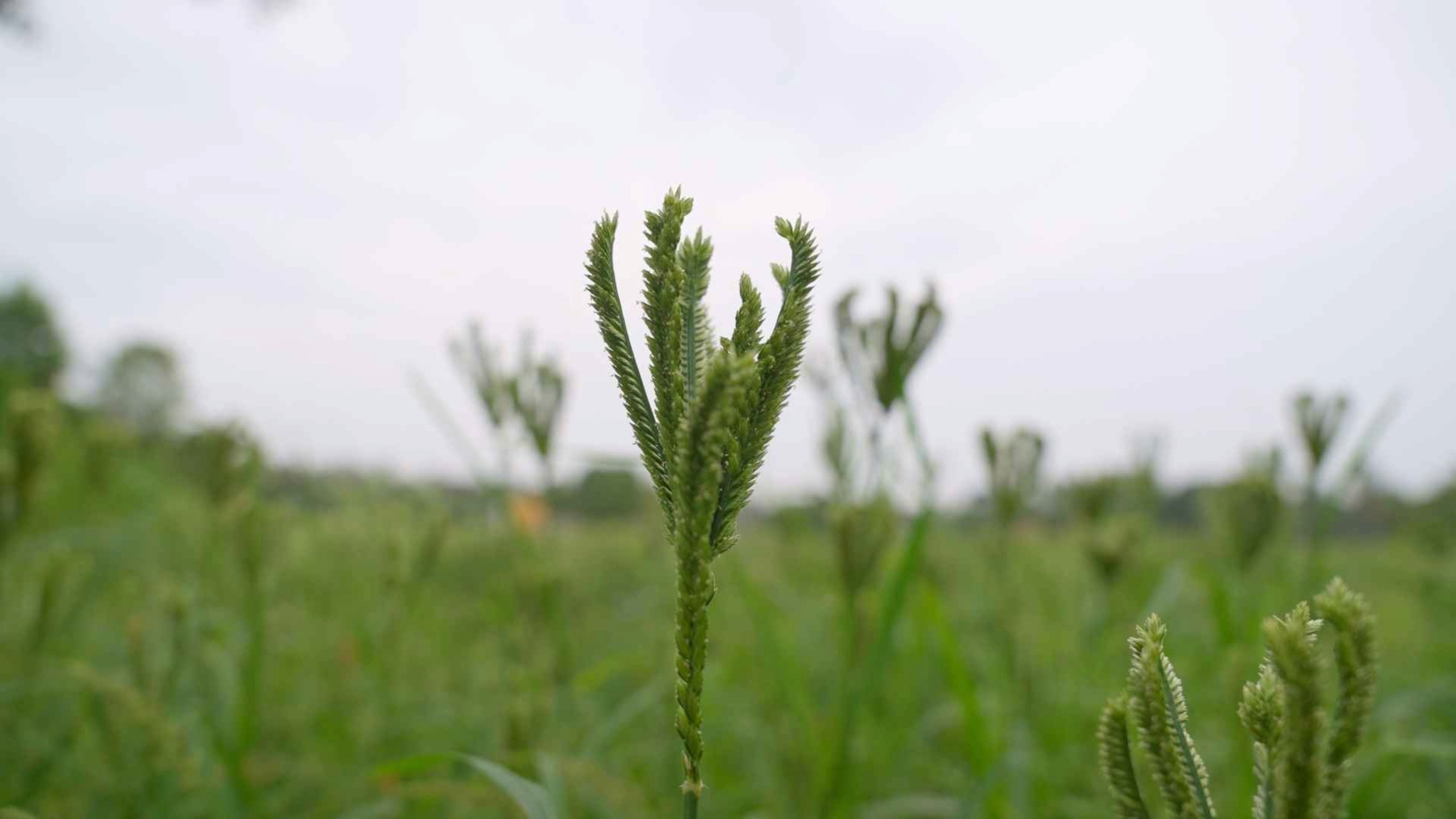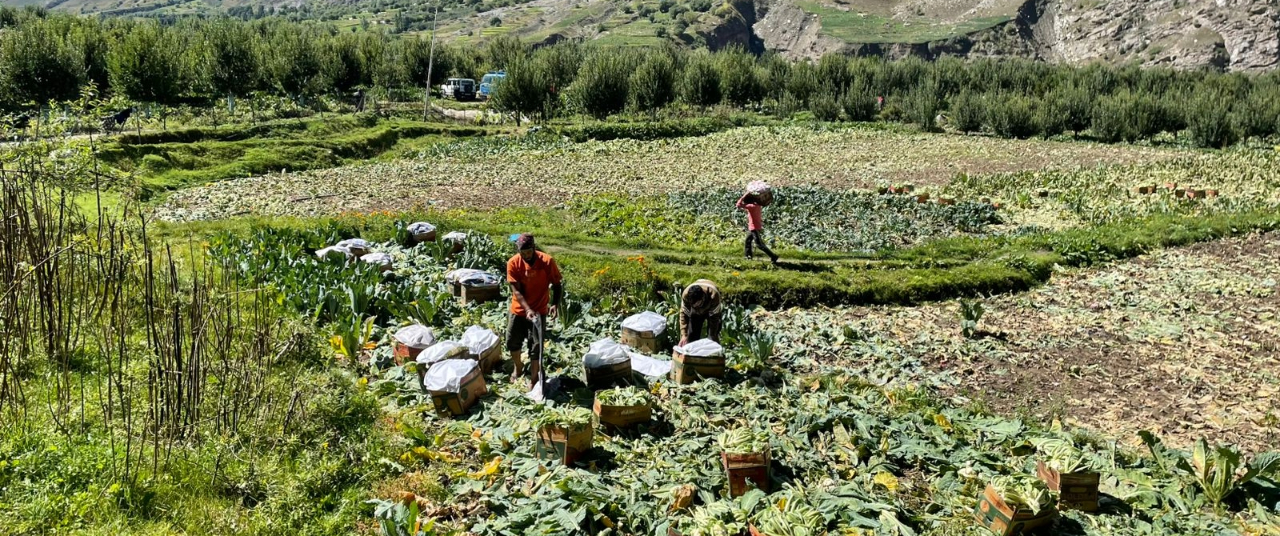The interaction of millets like sorghum with trees like teak creates the holistic ecosystem needed for the Earth






Editor's note: Even before its current status as a nutrient-rich superfood, ragi has been a crucial chapter in the history of Indian agriculture. Finger millet, as it is commonly known, has been a true friend of the farmer and consumer thanks to its climate resilience and ability to miraculously grow in unfavourable conditions. As we look towards an uncertain, possibly food-insecure future, the importance of ragi as a reliable crop cannot be understated. In this series, the Good Food Movement explains why the millet deserves space on our farms and dinner plates. Alongside an ongoing video documentation of what it takes to grow ragi, this series will delve into the related concerns of intercropping, cover crops and how ragi fares compared to other grains.
Forests and farms have an ancient link: centuries ago, the first farms were carved out of forests. Humans evolved from farming within the forest, to farming alongside it. We planted woody trees into farmlands and held onto the forest, even as agricultural land expanded.
However, over time, as the two became more distinct, so did their functions. The forest became the custodian of biodiversity and the farm the provider of food: two diverging arms that could not meet. In the mid-1970s, as scientists sought to bring back the practice of farming alongside forests, John Bene, a Canadian forester published a study coining the term agroforestry.
Agroforestry, as the name suggests, is an integration of woody vegetation (trees or shrubs) with farmlands and animal husbandry. However, it is more than just the introduction of trees into farms—it is the dynamic interaction of all three elements (farms, animals, and trees) to create a more diverse ecosystem. And while proponents usually frame it as a method of land management to be introduced into farms, it has also traditionally included farming within forest lands by indigenous communities. Just like intercropping diversifies from the main crop by planting subsidiary crops, this technique incorporates trees and shrubs into the ecosystem of the farm and enriches it. Neem trees serving as wind barriers for a bajra crop, jackfruits harvested within forest lands, or coffee plantations growing in the shade of mango trees are all examples of agroforestry in practice.
Also read: Why Akkadi Salu, an ancient practice of intercropping deserves a comeback
A climate solution
As a farming system, agroforestry is both farmer- and climate-friendly. In many ways, it is analogous to organic farming. The mulch the trees provide replaces fertilisers, and the friendly predators they house – like birds and insects – feed on pests, replacing pesticides. Agroforestry is also believed to have a higher potential for carbon sequestration than single-species farms.
Agroforestry is also believed to have a higher potential for carbon sequestration than single-species farms.
Trees anchor a farm and enrich the soil—from preserving the top soil and preventing soil erosion, to serving as mulch and negating the need for fertilisers. Their cooling effect on fields increases yield. Beyond enhancing the main crop’s yield, fruit trees can serve as an additional source of income, becoming a useful safeguard during lean harvests. Similarly, they can bring diversity to the local wildlife and animal feed while also reducing methane emissions associated with livestock farming.
Also read: The grain divide: How ragi and rice compare in the field and on our plates
India, agroforestry and millets
Indigenous communities, worldwide and in India, have been practicing agroforestry since time immemorial. But it was only in 1983 that research in agroforestry got consolidated government support in India. In February 2014, India became the first country to adopt a National Agroforestry Policy, which included easing rules on harvest and transit of agroforestry products and providing a range of financing options for farmers.
In recent years, millets have found renewed interest in agricultural spaces because they are climate resilient. Given that they also have more proteins and minerals than cereals like wheat and rice, they are gaining consumer appeal. And they continue to be culturally relevant in several arid and semi-arid parts of the country, with India making up 80% of all millet production in Asia, and 37.5% of global production.
In February 2014, India became the first country to adopt a National Agroforestry Policy, which included easing rules on harvest and transit of agroforestry products and providing a range of financing options for farmers.
This makes millet-based agroforestry a uniquely positioned climate solution. Ragi, with its significance across the country, and especially in the Deccan Plateau, becomes a key grain to consider in this context.
Across India, ragi is frequently intercropped with trees for a variety of benefits. In Karnataka, Andhra Pradesh, and Telangana, ragi is usually accompanied by the maha neem (melia dubia). In Karnataka, it is also common to intercrop with Gliricidia sepium, which increases the microbial biomass. Fruit trees like jamun, mango, and guava are often incorporated, as are root vegetables like carrots and beetroots. Ragi is also often rotated with maize in Karnataka.

Bhimal (Grewia oppositifolia) is often planted alongside ragi in Uttarakhand. In Maharashtra, ragi grows under the shade of the bamboo. Other millets have also been successfully incorporated in agroforestry. Sorghum is commonly planted with teak. Pearl millet planted in Rajasthan under Indian jujube was wildly successful, while in Uttarakhand it has grown well under poplar too.
In many ways, agroforestry is the harvesting of sunlight in layers.
For these benefits to truly accrue, the combination of trees and crops have to be chosen carefully to complement each other—their heights and root systems upon maturation should maximise the reach of sunlight and soil moisture. In many ways, agroforestry is the harvesting of sunlight in layers. For instance, let us take the example of an agri-horti-forestry system. The crops are layered, with the first layer being a ground layer crop like a tuber. The second layer includes crops that will reach 2-3 feet height, like ragi. The third layer is usually horticultural plants like jackfruits or papaya which grow 10–15 feet high. The fourth (and usually final) layer includes plants growing beyond 15 feet, mostly including tree crops like bamboos which serve as wind barriers, but can also be harvested for additional income.
Across the world, millet-based agroforestry has existed, not only because it makes farming more holistic and profitable, but because it contributes important ecosystem services and mitigates the environmental impact of intensive farming. India is in a unique position to revive these traditional agroforestry systems—land, yields, farmers and the planet all stand to gain much from it.
Also read: Rewilding farmland: The story of Shihab Kunhahammed’s edible forests
{{quiz}}
Explore other topics
References




.avif)


.png)



